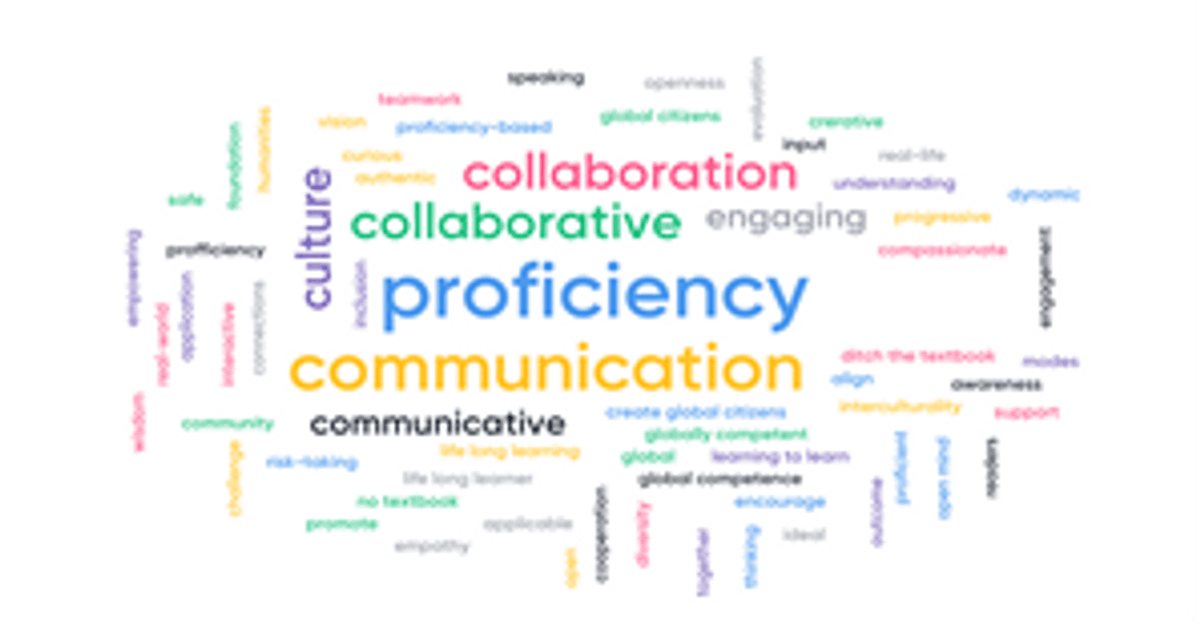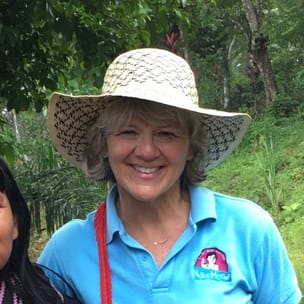Professional Development

Proficiency

Blog
Developing an oral proficiency program is not easy. My former colleague, Holly Morse and I submitted a proposal on this topic for ACTFL 2019 as we felt we had a lot to share on how we led various departments in shifting to oral proficiency-based programs. Our goal was to keep it real, no sugar coating.
Share
Developing an oral proficiency program is not easy. My former colleague, Holly Morse and I submitted a proposal on this topic for ACTFL 2019 as we felt we had a lot to share on how we led various departments in shifting to oral proficiency-based programs. Our goal was to keep it real, no sugar coating. We wanted to share the growing pains and joys we went through and help others avoid unnecessary difficulties. Here are some of the key takeaways we shared during our ACTFL presentation:
Your mission defines the values and principles of your department. A mission statement guides instruction, curriculum, and even assessments. It gives a sense of collaboration and the sense that we are all in this together. Without a mission that supports your vision, you won’t get very far. The first thing we recommend is to review your mission statement and see how well it articulates the chosen direction of your department. I was fortunate to attend an ISM workshop for department chairs where we spent a lot of time discussing the value of a mission-driven department. I highly recommend this workshop for department chairs. A new or revised mission statement needs to be discussed, developed, and accepted by the entire department, otherwise, it is just words. At ACTFL we facilitated an activity using Mentimeter to gather participant’s ideas on keywords that could be included in a mission statement for oral proficiency programs.

Transforming a department completely or even partially is an overwhelming task. You will need a lot of patience, support, and self-care. When it comes to support, ACTFL, with all its published material and benchmarks, is the number one place to go. Additionally, we invited leaders in the field we met at ACTFL or state conferences to come to our schools. The purpose of these visits was to have consultants evaluate our current program and develop strategic goals to move in the right direction.
We are extremely grateful to have worked in our respective schools with wonderful and encouraging professionals in the field such as Thomas Sauer, Helena Curtain, and Greg Duncan. We received a lot of “radical” suggestions and areas to improve on including starting from the bottom and working our way up, shifting to can-do statements, and getting rid of grammar quizzes and fill-in the blank activities. If you can’t bring the experts to you, get out and visit some schools using a proficiency model!
The reality is that we are continually evolving, moving, shifting and advancing. Look at us now in the middle of a pandemic, developing the art of online teaching! As Holly and I sat hashing out our ideas for our workshop, it occurred to us to use the same language that ACTFL uses to describe the levels of proficiency.
We knew that it would either resonate with our participants or reinforce what they were learning throughout their conference experience. So, we used the novice, intermediate, and advanced terminology to describe the levels of the development of an oral proficiency program.
In a nutshell, as a novice department, teachers may understand more than we can do. We can repeat ACTFL terminology and phrases that we hear about oral proficiency, but we do not apply them in action because we really don’t know what they represent or mean. However, we are curious and want to know more. We have a gut feeling that what we are doing is not the best and is not working for our students. Something has to change but we are constricted by the way we have been doing things for years and what is expected of us. We need guidance.
At the intermediate level, as departments work towards shifting, things get very messy; it’s overwhelming and all over the place, but things are beginning to take shape. One of the important decisions we had to make was whether to keep going on without textbooks or not. The task is arduous and time consuming. The messiness can be frustrating, in particular, the area of alignment is a big issue. At the time when we were experiencing this level, Wayside published the EntreCulturas series.
We found this program to be the closest match to what we were trying to do: a curriculum based on units that made sense and flowed, parallel themes across languages, grammar chunking, IPA’s, rubric grading, a focus on oral proficiency, lots of attention to developing interculturality, and the use of authentic resources. Another hook for EntreCulturas was the aligned curriculum for both IB and AP frameworks.
Although the idea of working without a textbook was tempting and we tried, oh did we try, we simply were struggling. Wayside Publishing really helped redirect our efforts and allowed us to focus on developing teacher skills to be better oral proficiency classroom teachers. Finally, all of our hard work starts to reflect in the classroom.
At the advanced level, there is so much going on but with a degree of sanity and comfort! Administration has your back, curriculum is aligned, the department is together with a shared vision, and you can use results and data in helping all your students grow in their oral proficiency skills. You may begin some standardized testing (AAPPL; STAMP) and/or doing oral proficiency interviews with MOPI certification. We take great pride in sharing this chart we developed for our workshop that summarizes and works as a self-assessment tool on where departments stand on developing an oral proficiency program.
Reflecting on the department's work and implementation is an ongoing process. Most of our meeting agendas usually start with “what’s working and what’s not”. Sometimes answers do not come right away. Other times, you need fresh eyes to come in and see things you missed or took for granted. Hitting refresh happens a lot! Taking a pause, a breather is essential to success. Listening, truly listening, to each other is also key.
When teachers say, “I need help on how to carry this out in the classroom”, you provide support as best you can. We were fortunate to bring in the pros like Katrina Griffin and Thomas Sauer to inspire and share a ton of practical tools. Finally, when things get tough, take time to recognize and celebrate all the positives, starting with student achievements!


Share: